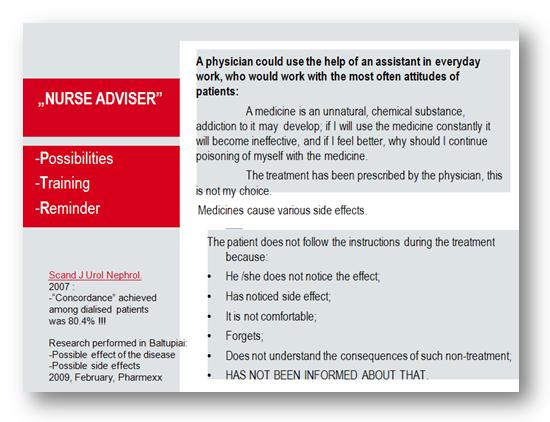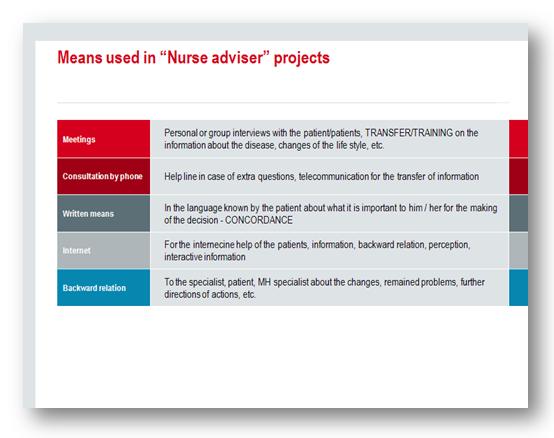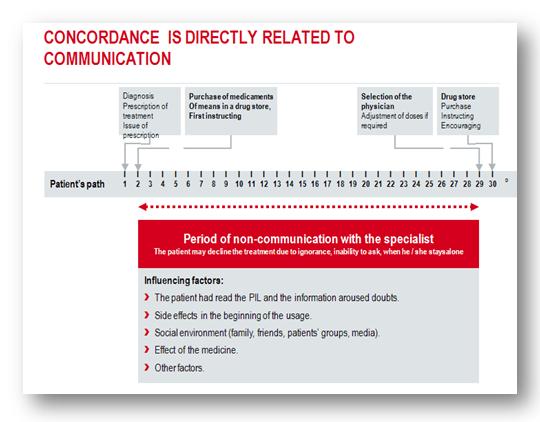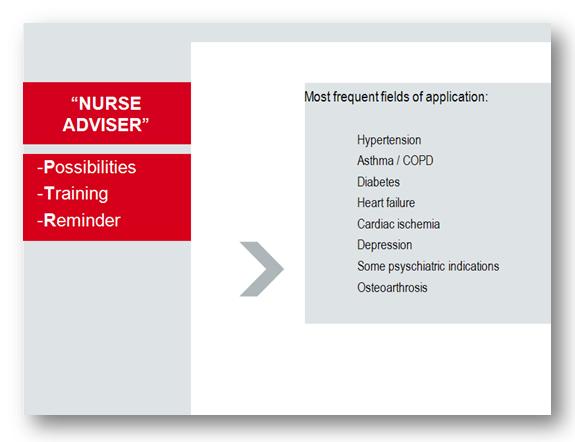
Description of the project

Part of the tasks, even the talking to the patient, could be transferred by the physician to a nurse; however, this is usually impeded by the nurse’s competence or just unwillingness to do that without additional remuneration.
Analysing the existing way of the patient from the beginning of illness to the stage of the enabled treatments, intervals of communication may be seen, so called “hot points”, in which specific information is very important to the patient: about the disease, examination methods, alternatives of treatment, effect of drugs and possible side effects, course of the disease, possible complications, etc.
It would be ideal to fill all gaps; however, this is quite difficult financially. Therefore while making the design of a nurse adviser project we always recommend to establish the points determining the largest progress and to focus the actions only to those points. It was established during the research of Baltupiai that a patient gladly answers to questionnaires related to his / her disease. This means that a physician, when establishes a patient who will probably will not follow the prescribed treatment, will be provided with a questionnaire and in short time we will have a picture of reasons which usually determine such behaviour. Also it will be clear when and what topics should be discussed additionally with the patient in order he / she would become a partner to the physician.
Following the assumptions and the analysis of the communication between the physician and the patient, a model of the “Nurse adviser’ service has been created.
While choosing the model of the project, it is important to understand the medical problem, therefore this is more effectively performed by the CSO’s manager-physician-product manager team.
The prepared project later may be changed considering the inner order of a medical institution. Usually the largest problems are created by the retention of the patient-physician’s secret. Therefore while performing the project it is necessary to consider this. Generally it should be worth to state that this fear is heavily exaggerated. In many cases it is simply solved by the transfer of the right of “contact” to the family physician. The patient, seeing the benefit, will easily open the door for further communication signing a consent / application to include him / her to the programme.





